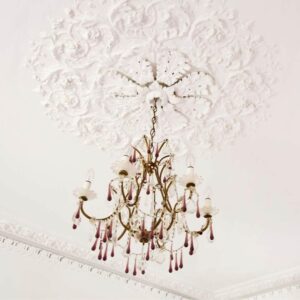Choosing the perfect interior lighting options for your home may seem like a simple task at first. Yet, stepping into a lighting showroom filled with myriad choices can quickly turn that simplicity into confusion. To ensure that you don’t end up with a dimly lit space that doesn’t align with your intended use, it’s crucial to have a clear grasp of your specific lighting requirements tailored to each area in your home.
Maximize Your Home’s Usability with Thoughtful Lighting Selections
Before you dive into the world of lighting, it’s essential to ask yourself some critical questions:
What activities will take place in this space, and how do you envision its use?
Reflect on how the room will be utilized at different times of the day, allowing the lighting design to elevate your overall experience. For example, living rooms frequently serve diverse functions, so integrating various lighting solutions can create a more versatile and functional atmosphere that adapts to your lifestyle.
Understanding the essential types of lighting and mastering the art of layering them is key to achieving effective illumination throughout your home. There are three main categories of lighting to consider:
1. Ambient (General) Lighting
2. Task Lighting
3. Accent Lighting
Discover the Importance of Ambient or General Lighting in Your Space
Ambient lighting establishes the overall brightness level within a room, providing critical illumination that enables safe navigation and visibility. This type of lighting is usually the first switch you turn on upon entering a room, and it tends to remain active for much of your time there.
Opting for energy-efficient LED bulbs is a smart choice to reduce energy consumption while enhancing brightness. Ambient lighting forms the foundation upon which all other lighting layers are built, serving as the backbone of your home’s lighting design.
It is indeed the cornerstone of your lighting strategy.
While you can enhance the ambiance with individual fixtures like floor lamps or table lamps, ambient light is predominantly created using overhead fixtures, including:
- Recessed lighting
- Track lighting
- Chandeliers
- Ceiling fans
- Area lights
When choosing light bulbs for your ambient lighting, prioritize lumens over watts. Traditionally, many associate brightness with wattage, which actually measures energy usage. With the emergence of energy-efficient options like CFLs and LEDs, lumens offer a more accurate gauge of brightness.
Customize Your Lighting Solutions to Suit Your Unique Space
For homes with high ceilings or when lighting over islands and dining areas, opting for suspended or pendant lighting is an excellent choice. Ensure that pendant lights hang no lower than 75cm (30 inches) from countertops or tables to maintain an unobstructed view.
Moreover, consider the size of your space when selecting pendant lights. In smaller rooms, choose lighter, more compact fixtures, while larger areas can accommodate more dramatic and substantial lighting options without overwhelming the space.
If additional illumination is needed, feel free to incorporate supplementary light sources that complement your main lighting, creating a well-lit environment that meets all your needs.
Choosing Appropriate Lumen Levels for General Lighting Needs
For general lighting purposes, the brightness level in a room doesn’t need to be as intense or focused as what you would require for task or accent lighting. Your electrician can assist in calculating the ideal lumen output to achieve optimal lighting conditions for your specific room.
Often, a single light fitting equipped with the right bulb can effectively serve general illumination needs. However, you can also enhance your lighting setup by adding more fixtures or opting for recessed downlights to ensure a more uniform distribution of ambient light throughout the area.
When considering recessed lighting, aim for about one fixture for every 4 square feet of ceiling space to guarantee adequate light coverage, ensuring that every corner of the room is well-lit.
Boosting Productivity and Enjoyment with Task Lighting
Think about activities that necessitate additional lighting, such as reading in bed, cooking in the kitchen, working on craft projects, or applying makeup in the bathroom. This specific type of lighting, known as task lighting, is designed to illuminate areas requiring focused light, enhancing your experience and efficiency.
Task lighting can be sourced from various fixtures, including spotlights, recessed lights, desk lamps, or table lamps, providing the necessary illumination to support different activities and tasks.
Essential Tips for Achieving Effective Task Lighting
While brightness is key, task lighting should not flood the entire room with light. Seek out fixtures that offer adjustability, such as those with dimming features or movable arms that can be positioned as needed for various tasks, ensuring optimum comfort and usability.
Choosing the Right Color Temperature for Your Lighting Needs
When selecting bulbs, it’s vital to consider the color temperature. Warmer bulbs are perfect for cozy evening reading sessions, while cooler bulbs are more suitable for spaces like the bathroom, providing a natural daylight effect that is ideal for makeup application.
Placement of lighting fixtures is also critical. Desk and table lamps should be adjustable and directed downwards to concentrate light on your tasks while reducing glare and shadows, ideally positioned to the side of your workstation for best results.
Using Accent Lighting to Showcase Key Features in Your Space
Essential Applications for Accent Lighting
Accent lighting plays a crucial role in highlighting artwork, plants, and architectural details, while also serving as decorative illumination. This type of lighting, often referred to as directional lighting, is specifically designed to create captivating focal points within any space.
It effectively draws attention to specific features, such as a stunning piece of art or an intriguing plant, while subtly illuminating architectural elements like wall textures or decorative coving.
Well-designed accent lighting should channel at least three times more light to the focal point than to surrounding areas, allowing the featured element to stand out without drawing attention to the lighting itself.
When implementing accent lighting, prioritize aesthetics over mere functionality. Consider the role of natural light in your space; your room may receive ample daylight, leading you to underestimate the need for sufficient ambient lighting during the evening.
Incorporating dimmers can enhance flexibility, allowing you to adjust the lighting to suit your evolving needs and preferences throughout the day.
Crafting Effective Lighting Solutions for Your Kitchen
The kitchen serves as the heart of most homes, where family members gather not only to prepare and consume meals but also to engage in various activities together. Therefore, it requires a thoughtful blend of different lighting types to accommodate its multifunctional nature.
A common mistake in kitchen lighting design is relying on a single light source or a basic track lighting system, which can lead to uneven illumination, glare, and shadows on work surfaces. To optimize your kitchen’s functionality, it’s crucial to implement flexible lighting solutions with strategically placed fixtures that enhance usability both day and night.
Task and accent lighting work in harmony to supplement natural light during daytime hours while providing general illumination throughout the evening. Given that kitchen lighting is often active for extended periods, upgrading to energy-efficient bulbs such as CFLs or LEDs can significantly reduce heat output, making them ideal for under-cabinet and task lighting.
Task lighting is vital for providing concentrated illumination where it counts the most in the kitchen environment.
Key areas to focus on for task lighting in the kitchen include:
- Countertops
- Islands
- Sinks
- Stovetops
- Inside cabinets and drawers
- Under-cabinet lighting
Enhancing Functionality with Under-Cabinet Lighting Solutions
Under-cabinet lighting is an effective method for providing targeted task lighting, illuminating areas where it is most needed while minimizing unwanted shadows that can hinder your work.
Many kitchen surfaces, such as granite and marble, are highly reflective, making it essential to select under-cabinet lighting that emits a diffused light source to reduce glare, such as LED strips that direct light towards the wall.
Incorporating Suspended Lighting for Style and Functionality
Pendant lights can serve both aesthetic and practical purposes within a kitchen environment. They provide ambient light that radiates in all directions, and when strategically positioned, these fixtures can also function as stylish task lighting over areas like your kitchen island or sink.
Maximizing the Impact of Recessed Lighting in Your Home
Recessed lighting is an excellent option for spaces with low ceilings. If you decide to install recessed fixtures, it’s important to position them close enough to cabinets to provide effective overhead lighting where you’ll be working; otherwise, you may end up with shadows on your countertops that can hinder visibility.
Aim to place the lights approximately 60cm from the walls, ensuring that the center of the light beam effectively illuminates the edges of the countertops for optimal functionality.
Incorporating Accent Lighting in Your Kitchen for Added Appeal
Accent lighting in the kitchen serves to showcase features such as artwork on the walls or decorative items on countertops, adding character and visual interest to the space.
There are numerous creative ways to integrate accent lighting into your kitchen design:
Consider using LED light strips under cabinets or incorporating baseboard lighting to create a warm glow. Additionally, if your kitchen has high ceilings, pendant lights or wall sconces positioned above the sink can provide both accent and task lighting, enhancing the overall ambiance.

Creating a Warm and Inviting Living Room Ambiance
The living room is a central gathering space for family members and often one of the first areas guests encounter. It should be well-lit, taking into consideration both functionality and aesthetics to foster a warm and inviting atmosphere.
The lighting in this room must support various activities, such as reading, socializing, or enjoying a movie together. If your living room includes a television, avoid placing ceiling lights directly above or in front of the screen, as this can create distracting glare that detracts from the viewing experience.
Instead, opt for accent lighting that can be dimmed or easily turned off to enhance your viewing experience, preventing light from interfering with darker scenes and allowing for a comfortable atmosphere.
Innovative Ideas for Ambient Lighting in Your Living Room
Implement a large central ceiling light, such as a stunning chandelier or a stylish pendant, to serve as the focal point of your living room. If you choose to use multiple light sources, ensure they are evenly distributed to avoid overly bright spots and harsh shadows that can disrupt the ambiance.
Opaque lampshades and frosted glass diffusers can effectively soften the lighting, creating a gentle glow throughout the space. For social gatherings, appropriate ambient lighting is crucial; warm-toned, dimmable bulbs help create an inviting environment that encourages conversation and relaxation.
Implementing Task Lighting for Enhanced Focus and Comfort
Task lighting is specifically designed to produce bright, focused light that facilitates clear visibility for particular activities, providing much-needed relief for your eyes. For avid readers or hobbyists, the right lighting allows you to concentrate on your work while minimizing eye strain and fatigue.
Lamps that offer adjustable brightness and positioning are the most effective sources of task lighting. Consider lamps with dimming options or those that provide multiple brightness levels to accommodate various tasks and preferences.
Position task lamps strategically at desks, tables designated for hobbies, and beside your favorite reading chair to maximize functionality and comfort.
Creating Visual Interest with Accent Lighting Techniques
Accent lighting is essential for adding visual intrigue and emphasizing key features in your living room. Use it to highlight artwork, architectural details, or decorative elements such as textures and mouldings that contribute to the room’s character and charm.
Showcasing Cabinets and Shelves with Thoughtful Lighting
Illuminating open shelves or cabinets is an excellent way to showcase cherished items, such as fine china, glassware, or decorative pieces that tell a story. Consider using fairy lights or LED strips in display cases and on bookshelves to subtly highlight your collections, creating an inviting atmosphere.
You can also hang fairy lights around houseplants to create soft pockets of light, adding an enchanting touch to your living space and enhancing the overall aesthetic.
To help you plan your home lighting effectively, consult a qualified electrician who specializes in lighting design and can provide valuable insights tailored to your needs.
The Article Interior Lighting Options For Your Home was found on https://limitsofstrategy.com
The Article Interior Lighting Ideas to Brighten Your Home First Appeared ON
: https://ad4sc.com










Comments are closed